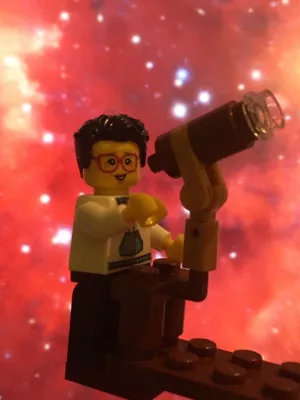
Jens Hoeijmakers
ASSOCIATE SENIOR LECTURER

3D non-LTE modeling of the stellar center-To-limb variation for transmission spectroscopy studies
Author
Summary, in English
Context. Transmission spectroscopy is one of the most powerful techniques used to characterize transiting exoplanets, since it allows for the abundance of the atomic and molecular species in the planetary atmosphere to be measured. However, stellar lines may bias the determination of such abundances if their center-To-limb variations (CLVs) are not properly accounted for. Aims. This paper aims to show that three-dimensional (3D) radiation hydrodynamic models and the assumption of non-local ther-modynamic equilibrium (non-LTE) line formation are required for an accurate modeling of the stellar CLV of the Na I D1 and K I resonance lines on transmission spectra. Methods. We modeled the CLV of the Na I D1 and K I resonance lines in the Sun with 3D non-LTE radiative transfer. The synthetic spectra were compared to solar observations with high spatial and spectral resolution, including new data collected with the CRISP instrument at the Swedish 1-m Solar Telescope between μ = 0.1 and μ = 1.0. Results. Our 3D non-LTE modeling of the Na I D1 resonance line at 5896 A and the K I 7699 A resonance line in the Sun is in good agreement with the observed CLV in the solar spectrum. Moreover, the simulated CLV curve for a Jupiter-Sun system inferred with a 3D non-LTE analysis shows significant differences from the one obtained from a 1D atmosphere. The latter does indeed tend to overestimate the amplitude of the transmission curve by a factor that is on the same order of magnitude as a planetary absorption depth (i.e., up to 0.2%). Conclusions. This work highlights the fact that to correctly characterize exoplanetary atmospheres, 3D non-LTE synthetic spectra ought to be used to estimate the stellar CLV effect in transmission spectra of solar-like planet hosts. Moreover, since different spectral lines show different CLV curves for the same geometry of the planet-star system, it is fundamental to model the CLV individually for each line of interest. The work will be extended to other lines and FGK-Type stars, allowing for synthetic high-resolution spectra to mitigate the stellar contamination of low-resolution planetary spectra, for example, those drawn from JWST.
Department/s
- eSSENCE: The e-Science Collaboration
- Astrophysics
Publishing year
2024-03-01
Language
English
Publication/Series
Astronomy and Astrophysics
Volume
683
Document type
Journal article
Publisher
EDP Sciences
Topic
- Astronomy, Astrophysics and Cosmology
Keywords
- Line: formation
- Line: profiles
- Planet-star interactions
- Planets and satellites: Atmospheres
- Sun: Atmosphere
- Techniques: spectroscopic
Status
Published
ISBN/ISSN/Other
- ISSN: 0004-6361

